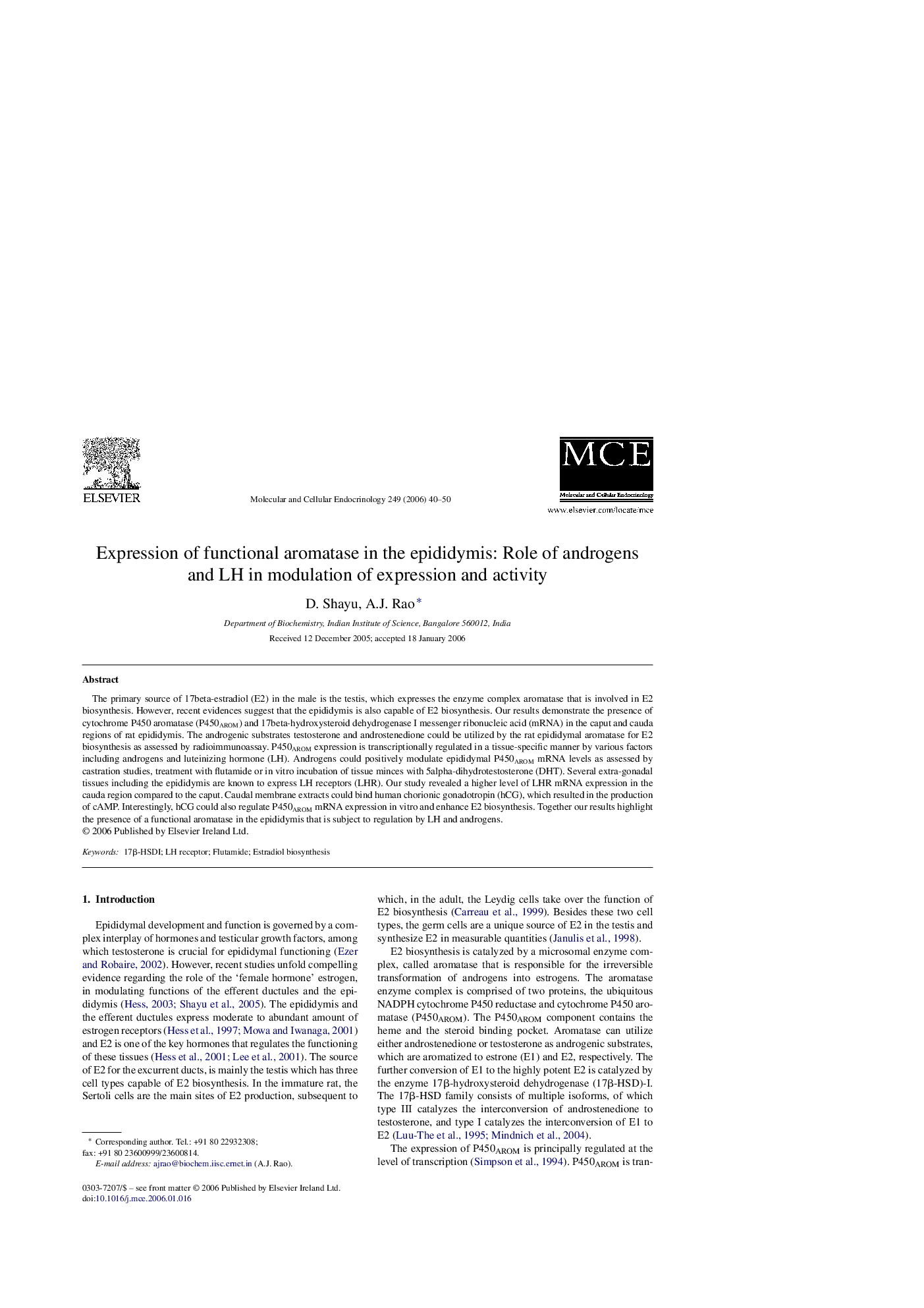| Article ID | Journal | Published Year | Pages | File Type |
|---|---|---|---|---|
| 2198259 | Molecular and Cellular Endocrinology | 2006 | 11 Pages |
The primary source of 17beta-estradiol (E2) in the male is the testis, which expresses the enzyme complex aromatase that is involved in E2 biosynthesis. However, recent evidences suggest that the epididymis is also capable of E2 biosynthesis. Our results demonstrate the presence of cytochrome P450 aromatase (P450AROM) and 17beta-hydroxysteroid dehydrogenase I messenger ribonucleic acid (mRNA) in the caput and cauda regions of rat epididymis. The androgenic substrates testosterone and androstenedione could be utilized by the rat epididymal aromatase for E2 biosynthesis as assessed by radioimmunoassay. P450AROM expression is transcriptionally regulated in a tissue-specific manner by various factors including androgens and luteinizing hormone (LH). Androgens could positively modulate epididymal P450AROM mRNA levels as assessed by castration studies, treatment with flutamide or in vitro incubation of tissue minces with 5alpha-dihydrotestosterone (DHT). Several extra-gonadal tissues including the epididymis are known to express LH receptors (LHR). Our study revealed a higher level of LHR mRNA expression in the cauda region compared to the caput. Caudal membrane extracts could bind human chorionic gonadotropin (hCG), which resulted in the production of cAMP. Interestingly, hCG could also regulate P450AROM mRNA expression in vitro and enhance E2 biosynthesis. Together our results highlight the presence of a functional aromatase in the epididymis that is subject to regulation by LH and androgens.
